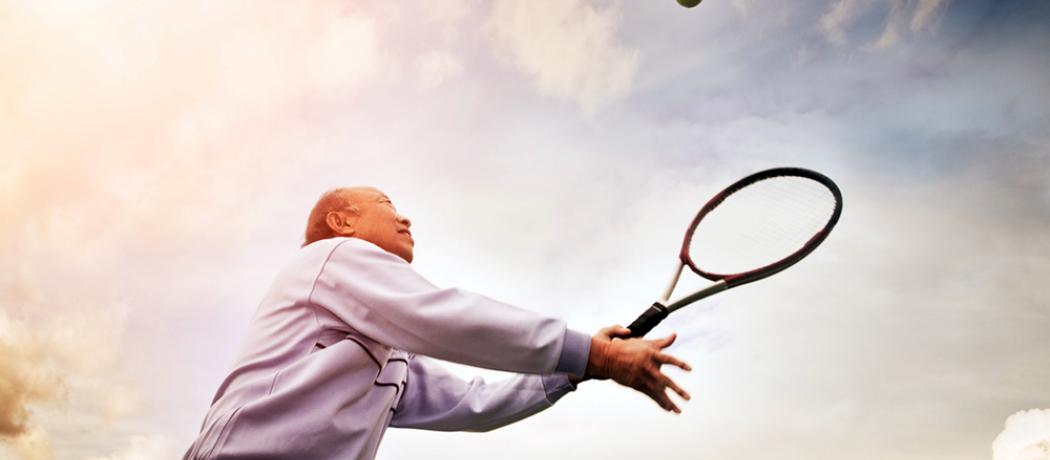A wide range of adaptive sports, sometimes referred to as disabled sports or parasports, are well known to all who watch the Paralympic Games or the more recent Invictus and Warrior Games. Apart from the rehabilitative and enjoyment value these sports offer to individuals with physical or mental disabilities, both permanent and temporary, the astounding individual and group accomplishments also help remove stigma associated with disabilities. At my rowing club I’m used to seeing men and women with complete or partial injuries to their spinal cord plying the waters in single’s rowing boats 26-feet long and 12-inches wide—the same as my very tippy single’s boat—but with modified seats and small side-pontoons attached. Though these competent rowers are members of younger generations, what brought the subject of elder sports to mind was an article I read recently: “Age shouldn’t be a barrier to playing competitive sports.”
The history of adaptive sports probably begins in 1911 with the Cripples Olympiad, held in the US. Following the Second World War, sport was introduced as a key part of rehabilitation by Sir Ludwig Guttman of the Stoke Mandeville Hospital in England. The Stoke Mandeville Games evolved into the Paralympic Games of today.
Sports for persons with intellectual disabilities evolved into the Special Olympics movement from a summer program organized in the early 1960s by Eunice Kennedy Shriver of the US. In the last few years Extremity Games were formed for people with limb loss. The Invictus and Warrior Games were organized in the UK and the US for wounded, injured, or sick armed services members and veterans. In Canada, Rick Hanson’s world tour in his wheelchair brought disabled sports into memorable focus.
As to competitive sports for aging persons, the history is quite recent. Just a few years ago 90-year-old, five-foot tall Canadian Olga Kotelko won numerous records at the World Masters Athletics Championship. While gentle activities like walking have traditionally been advised for older persons, there is now a move to add sports to the daily agenda of people of advanced age. Modifications to various sports for older adults already exist: larger racquets, smaller tennis courts, stationary bicycles, and rowing machines are certainly being used. However, these activities miss the excitement of sport as a competitive activity. It is only in recent years that walking sports have emerged, a category of competitive activities that I had never heard of.
In 2011 walking soccer was introduced in the UK. Since then numerous clubs have been established in other countries too, and in May of this year England faced Italy in an international walking-soccer tournament. There are now also walking versions of rugby, basketball, netball—whatever that is! Some participants say that they enjoy the competitive element in these modified sports. They find the activities to be a fun, pleasant way to socialize. Others see the opportunity to re-engage in a sport they had played when they were younger. I took up rowing at age 63. I am not in any competitions, but my competitive instincts are activated even at age 89 when another rower tries to pass me. My doubles rowing partner (age 72) participates in most club masters regattas in Canada and the US.
I think there is a great opportunity here to develop modified versions of many traditional sports to diversify physical activity options for older persons. The physical and psychological benefits of elder sports have not been studied in depth yet. Hopefully the occasional fall, or even broken bone, does not discourage the enthusiasts. So, referee, blow your whistle! The elder game is afoot!
—George Szasz, CM, MD
Suggested reading
Jenkin C. Age shouldn’t be a barrier to playing competitive sports. The Conversation. Accessed 20 August 2018. https://theconversation.com/age-shouldnt-be-a-barrier-to-playing-competi....
Disabled sports. Wikipedia. Accessed 20 August 2018. https://en.wikipedia.org/wiki/Disabled_sports.
This posting has not been peer reviewed by the BCMJ Editorial Board.

